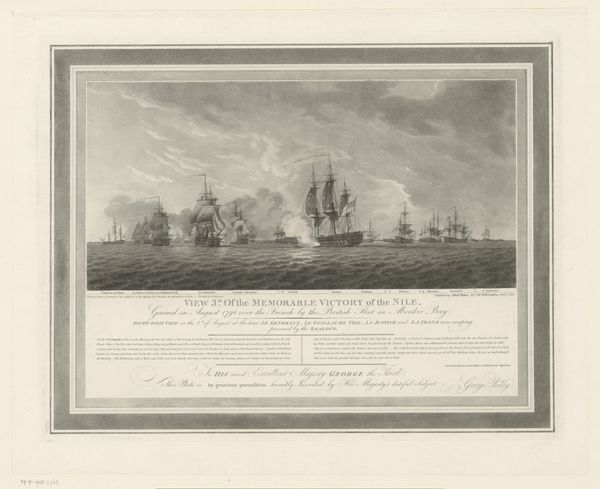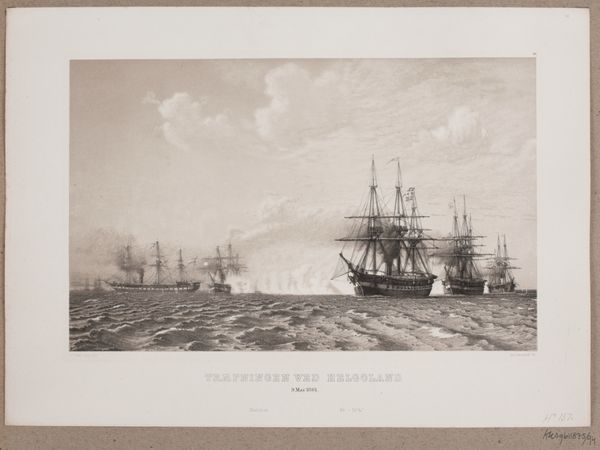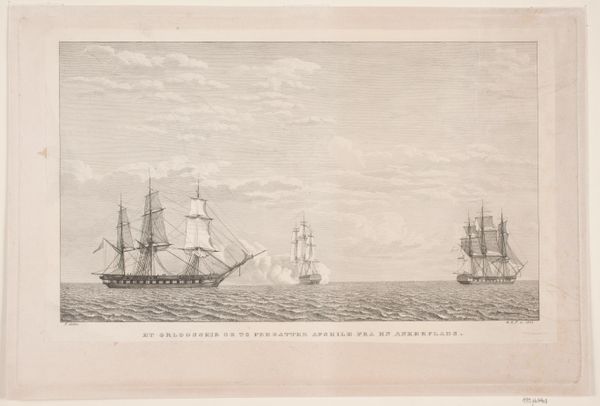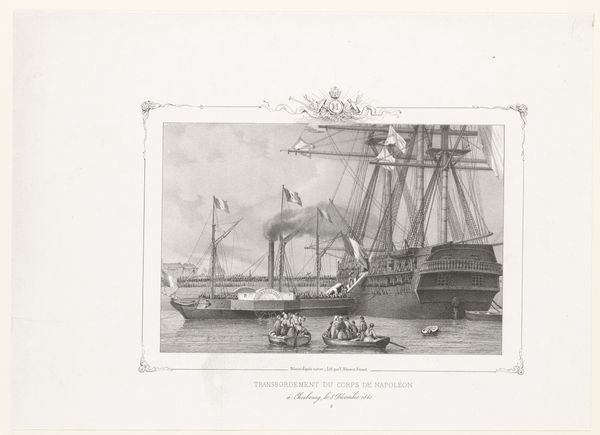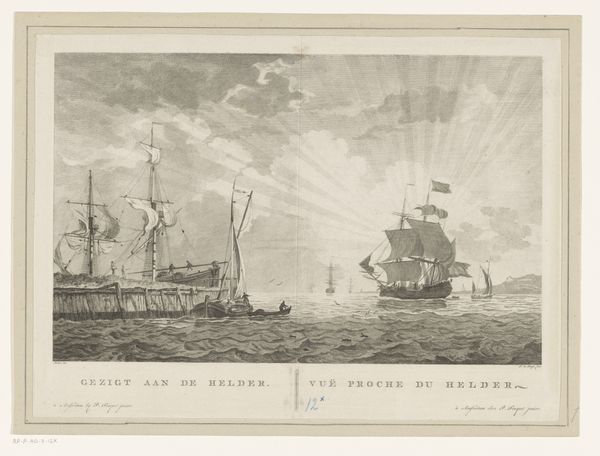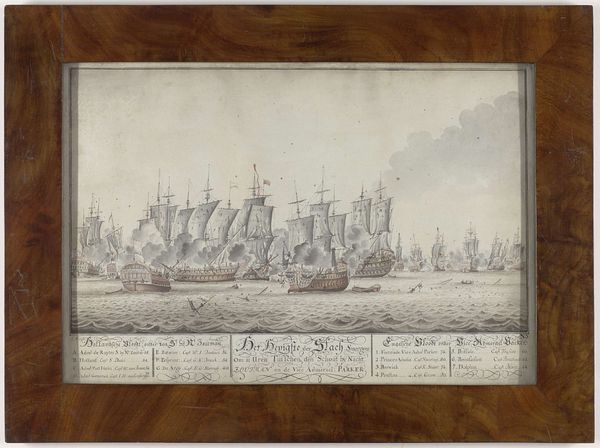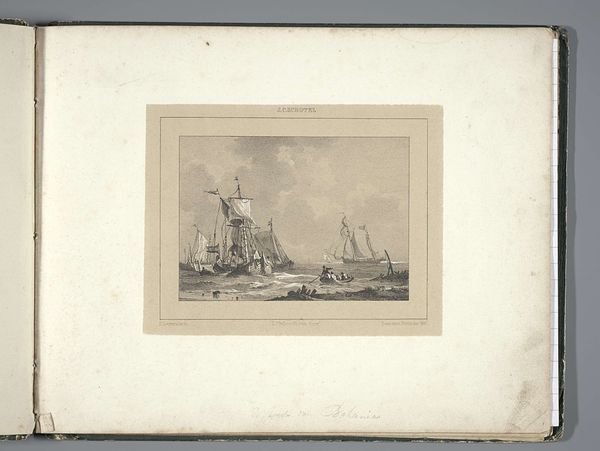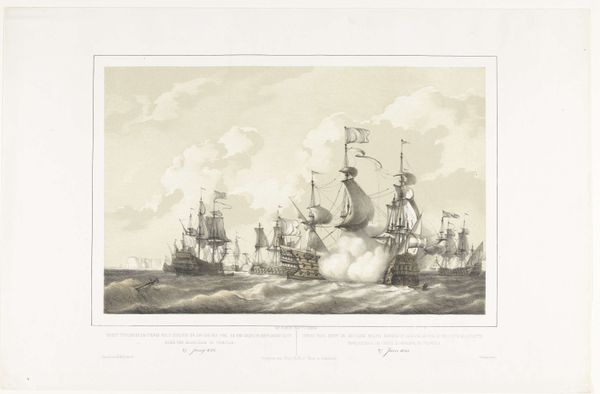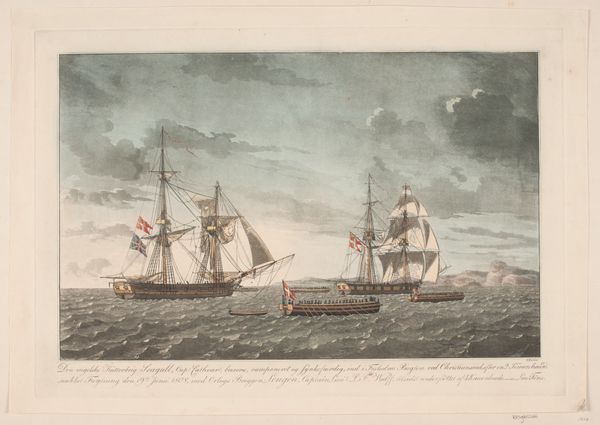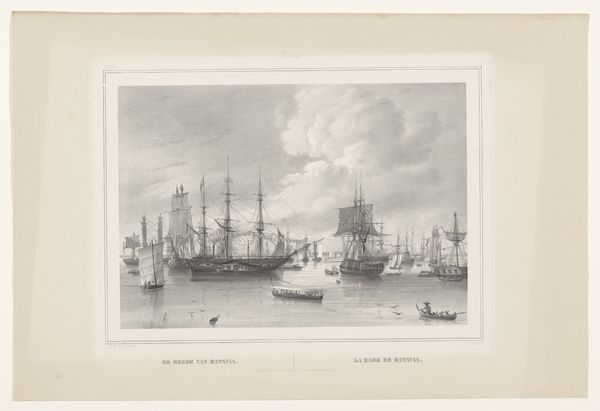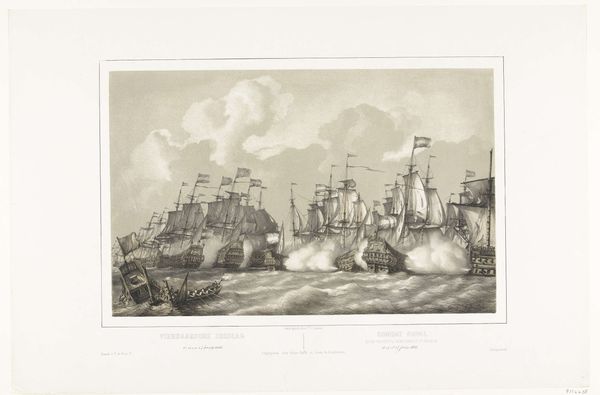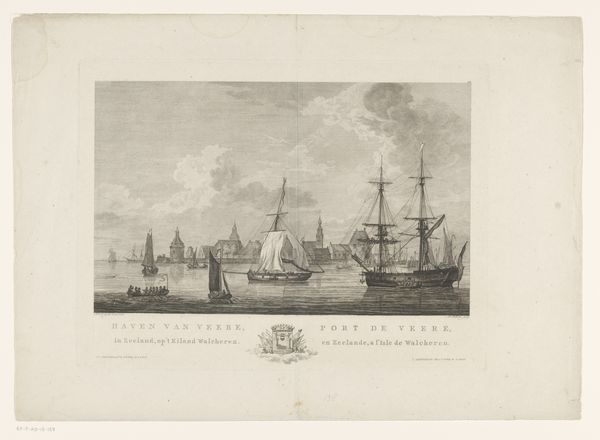
Gezicht op de Baai van Aboukir in de Nijl met de Britse vloot onder leiding van de schepen Goliath en Zealous, 1 augustus 1798 1800 - 1812
0:00
0:00
Dimensions: height 354 mm, width 457 mm
Copyright: Rijks Museum: Open Domain
This aquatint, "Gezicht op de Baai van Aboukir in de Nijl met de Britse vloot onder leiding van de schepen Goliath en Zealous, 1 augustus 1798," was created by William Ellis. Although Ellis created this image later in life, he depicts a monumental moment in the 1790s. It offers a window into the cultural and political narratives of 18th-century naval power. This image immortalizes a British victory, a scene of dominance and imperial reach, but what stories are obscured beneath the waves? Consider the labor, often forced, of the sailors who manned these ships, their identities and lives molded by the demands of empire. What did victory mean for the British versus the Egyptians, who were not even included in this depiction? This isn’t just a picture of ships; it’s a snapshot of a world order, a moment of triumph built on the backs of countless individuals. What alternative narratives might challenge this singular view of history?
Comments
No comments
Be the first to comment and join the conversation on the ultimate creative platform.
